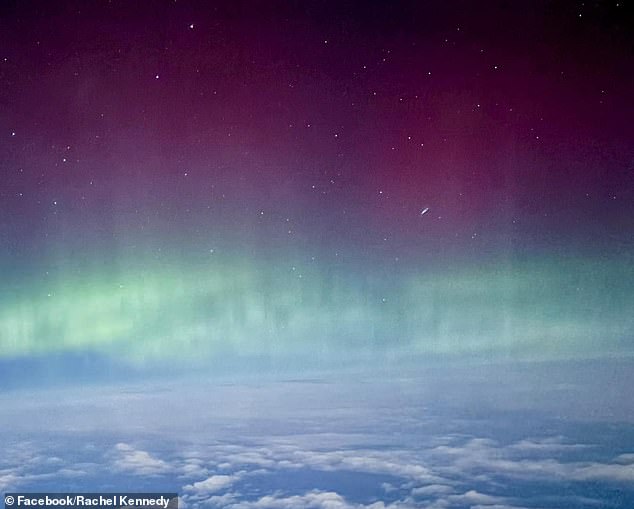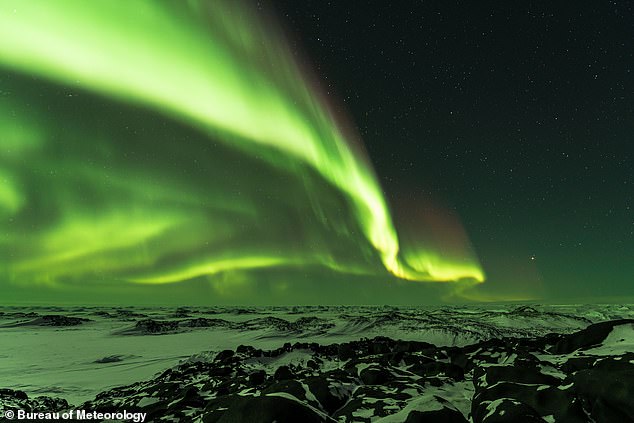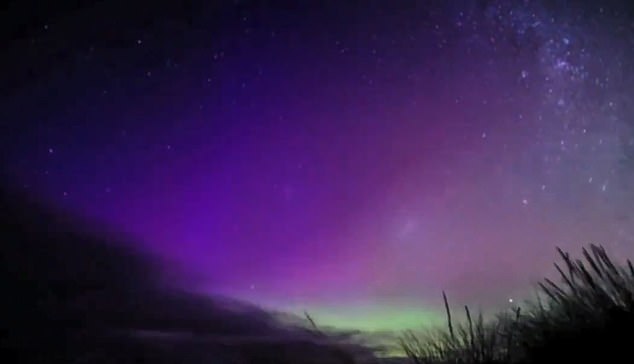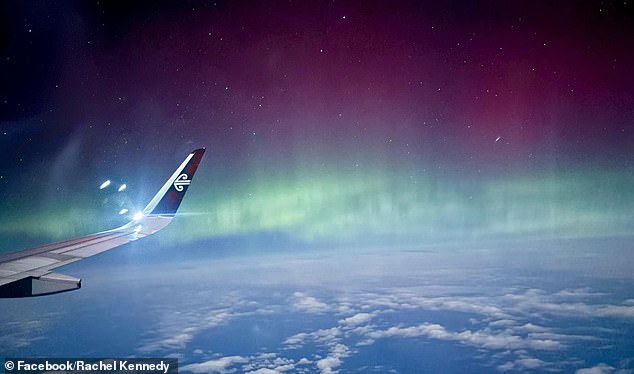An Air New Zealand passenger captured stunning footage of the spectacular Aurora Australis light show as the plane flew by.
Australian Rachel Kennedy was on a flight from Melbourne to Christchurch, New Zealand, on Tuesday night when she looked out of the window and saw the stunning phenomenon.
“I had changed seats on my flight to be on the right side of the plane just in case and had been following aurora forecasts for days,” said Kennedy, who had travelled from Melbourne to Christchurch for a work conference.
“My first photographs captured the green arch, but not much else,” Kennedy said.
However, the captain decided to turn off the lights and was able to capture several impressive images.
As soon as he landed, he shared the images on the Facebook page ‘Aurora Australis’, where thousands of people commented on the incredible photos.
“I should have been on a plane last night,” one person said. “Note to self: book more flights.”
The passenger captured the “spectacular” light show of an aurora australis during her flight from Melbourne to New Zealand on Tuesday (pictured)

The Australians said the light show looked “magical” and the traveller had a “once in a lifetime” chance to see it from a plane (pictured)
“What an amazing view and experience,” added a second.
“Oh my god, this is fascinating,” said a third.
“I think you just won the Aurora Photography of the Year award. Congrats,” added another.
The Aurora Australis, also known as the Southern Lights, is a natural light show similar to the Northern Lights (Aurora Borealis).
It is caused by the interaction between the solar wind (charged particles from the sun) and the Earth’s magnetic field, which excites gases in the atmosphere, causing the emission of colorful lights.
“Some of the Sun’s energy and small particles can travel through magnetic field lines at the North and South Poles into the Earth’s atmosphere,” the Australian Space Agency said.
‘There, particles interact with the gases in our atmosphere, giving rise to very beautiful spectacles.
‘In some cases, the combination of particles and oxygen produces green and red light. In others, the interaction with nitrogen produces blue and violet flashes.’
The Aurora Australis can be seen throughout the year, but is most commonly seen around the March and September equinoxes, when longer, darker nights improve the chances of seeing the lights.
For Australians interested in seeing the Aurora Australis, the Bureau of Meteorology’s Australian Space Weather Forecast Centre has a dedicated website Forecast, guide and tips To help.
“Ideally, a dark night with little cloud cover,” the BOM explained. “We don’t want a bright moon or light pollution, so a good location is a dark beach or a hill with a clear view to the south.”

The colorful light show occurs when a solar storm descends on Earth, bringing particles that interact with gases (archive photo of Aurora Australis over Antarctica)

The Aurora Australis can be seen at any time in Australia, but May and September are the best months (Aurora Australis stock photo)


